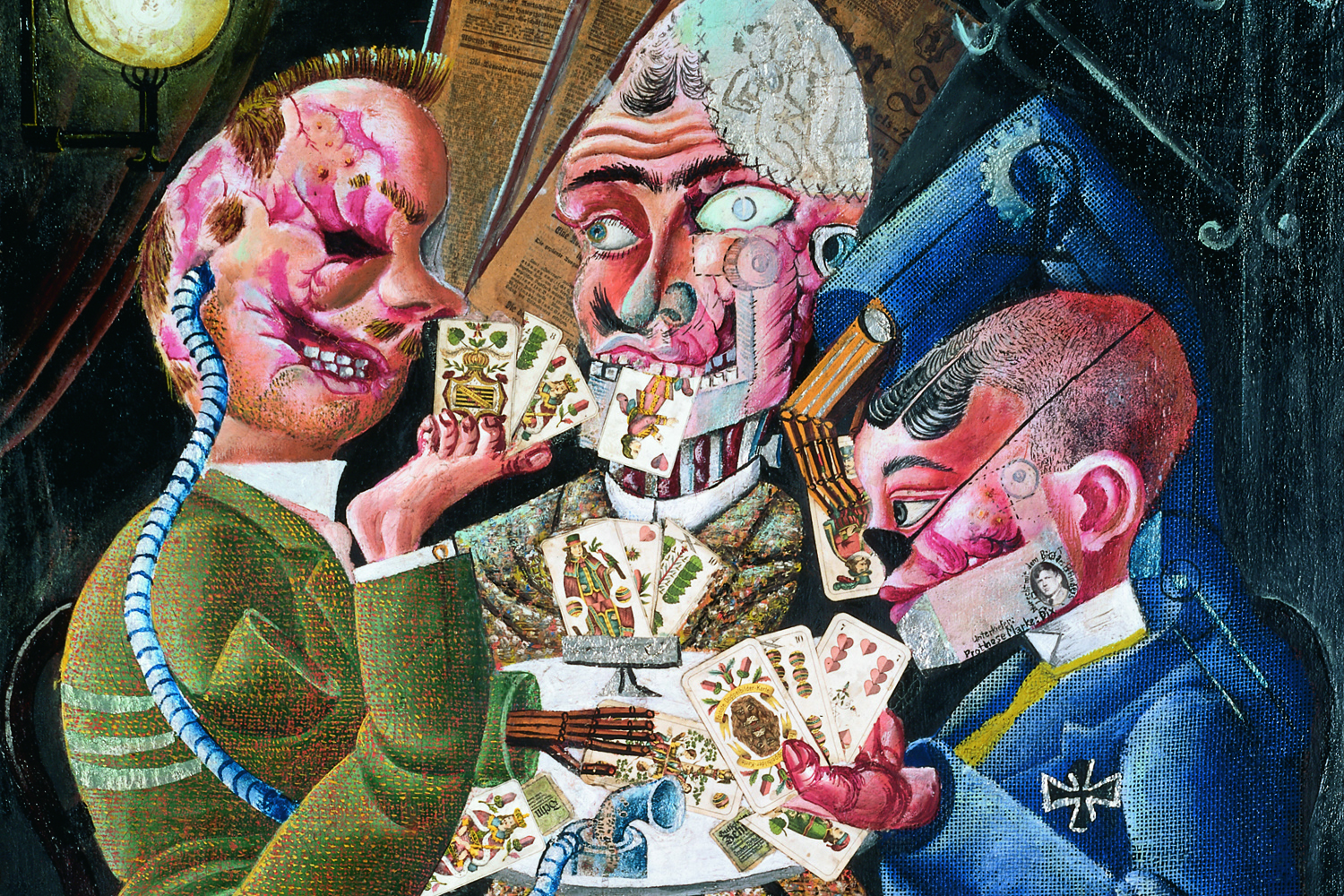Otto Dix
The Skat Players (War Cripples Playing Cards), 1920
Artist
Otto Dix
Title
The Skat Players (War Cripples Playing Cards)
Year of creation
1920
Technique and dimensions
Oil and collage on canvas, 110 x 87 cm
Year of acquisition
1995
In April 1919, war returnee Otto Dix witnessed how angry war invalids threw the Saxon defense minister Neuring into the Elbe and shot him. In 1920, the begging war cripples on the famous Prague Street became a disturbing presence for the painter. The shock of the experience was deep, with sympathy but also distance, Dix painted, glued and sewed together his four-picture series of war cripples in a crude, strikingly simplified grotesque style between March and June 1920.
Dix had seen the cripples playing cards in a back room of a Dresden coffee house. “The Skat Players” was staged by the “director” Otto Dix as a grotesque chamber play with three invalids in a late-night coffee house. A conspiratorial gathering of fragmented outsiders from post-war society, entangled in the misery of the Kapp Putsch, inflation and social hardship. At the marble table, three former officers in civilian clothes are playing skat with the "Sächsichen Doppelbild" from Altenburg, behind the trio of this obscure group of men rises the fan with the pasted-in daily newspapers: "Dresdner Anzeiger" - "Dresdner Neueste Nachrichten" - "Berliner Tagblatt" - On the left the blind, hard-of-hearing sergeant, bully and philistine, in the middle the chimerical captain, the warhorse type, erotic fantasies under the roof of his skull: Sexus - Plexus - Perplexus. On the right is the boyish lieutenant, the dapper "aristocrat" type, a "green boy" in the adventure "War". The painter mocked himself with his passport photo in the head of the figure on the right: "Lower jaw: prosthesis brand: Dix. Only real with the picture of the inventor."
Otto Dix used the Dadaist grotesque of oil painting and collage (playing cards, newspapers, aluminum foil, textile imitation made of paper) in a provocative mixture in order to expose the absurdity of the post-war misery with the socially excluded material half-human "cripple" in a shocking panopticon-like manner. The Skat players' dogged will to survive survives in this grotesque "Despite everything!" the misery of the terrible circumstances of the times: "For me, art is banishment" (Otto Dix) - the banishment of the ugly, paradoxical and terrible at the abyss of time.
The picture, which was thoroughly restored by Ursus Dix, the artist's son, in 1984/85, was offered for sale in 1994 from a private collection in southern Germany. It is primarily thanks to the Association of Friends of the Nationalgalerie and its chairman Peter Raue that The Skat Players, as a major work of Dresden Dadaism and early Verism, was secured for the Nationalgalerie in an unprecedented fundraising campaign.
Roland March
